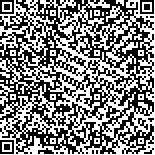| 本文已被:浏览 1759次 下载 1259次 |

码上扫一扫! |
|
|
| 2019年5月黄海及东海北部大型水母分布特征 |
|
郭东杰1,2,3,4, 张芳1,2,3,4, 王朋鹏1,2,3,4, 吴强5
|
|
1.中国科学院海洋研究所 海洋生态与环境重点实验室 青岛 266071;2.青岛海洋科学与技术试点国家实验室 海洋生态与环境科学功能实验室 青岛 266071;3.中国科学院大学 北京 100049;4.中国科学院海洋大科学研究中心 青岛 266071;5.中国水产科学研究院黄海水产研究所 山东省渔业资源与生态环境重点实验室 青岛 266071
|
|
| 摘要: |
| 2019年5月,利用渔业底拖网,对我国黄海以及东海北部海域进行了全面系统的大型水母调查,分析了大型水母的种类组成、伞径大小和生物量以及与温度、盐度的关系。结果表明,本次调查主要捕获到沙海蛰、霞水母、洋须水母、多管水母四种大型水母,沙海蛰生物量最高,多管水母分布范围最广、数量最大。沙海蛰集中分布在调查海域南部,各海域伞径差异显著,在黄东海交界海域采集到幼水母体(<10cm),生物量高值区出现在东海北部离岸海域,可达6422.16kg/km2;白色霞水母集中分布在东海北部,在近岸海域采集到幼水母体(6-7cm),生物量高值区位于离岸海域,可达7417.49kg/km2;洋须水母集中分布在黄海水深较深海域,北部海域个体较大,在黄海中部、南部交界处采集到幼水母体(<10cm),生物量较低,高值区出现在黄海中部与南部,可达449.94kg/km2;多管水母分布范围较广,东海北部海域个体伞径较大,在山东半岛东部发现幼水母体(<5cm),生物量高值区出现在黄海中部近岸海域,可达4901.42kg/km2。对比文献资料,发现整个调查海域,大型水母总体生物量比2015年同期有所增加。本文为研究该海域大型水母的年际变化规律提供数据基础。 |
| 关键词: 水母暴发 生物量 伞径 时空分布 |
| DOI:10.11693/hyhz20190700148 |
| 分类号:Q958.8 |
| 基金项目:山东省支持青岛海洋科学与技术试点国家实验室重大科技专项,No.2018SDKJ0504-3;鳌山科技创新计划项目,2016ASKJ02-2号;中国科学院战略性先导科技专项(A类)资助,XDA11060203号;国家重点研发计划,2017YFC1404405号。 |
附件 |
|
| DISTRIBUTION AND BIOMASS OF LARGE JELLYFISH IN THE YELLOW SEA AND NORTHERN EAST CHINA SEA IN MAY 2019 |
|
GUO Dong-Jie1,2,3,4, ZHANG Fang1,2,3,4, WANG Peng-Peng1,2,3,4, WU Qiang5
|
|
1.Key Laboratory of Marine Ecology and Environmental Sciences, Institute of Oceanology, Chinese Academy of Sciences, Qingdao 266071, China;2.Laboratory of Marine Ecology and Environmental Sciences, Pilot National Laboratory for Marine Science and Technology(Qingdao), Qingdao 266071, China;3.University of Chinese Academy of Sciences, Beijing 100049, China;4.Center for Ocean Mega-Science, Chinese Academy of Sciences, Qingdao 266071, China;5.Key Laboratory for Fishery Resources and Eco-Environment, Yellow Sea Fisheries Research Institute, Chinese Academy of Fishery Sciences, Qingdao 266071, China
|
| Abstract: |
| To explore the population resource, a comprehensive fishery survey was designed and conducted aboard the R/V Beidou in May 2019. Jellyfish were sampled using a bottom trawl in 103 stations. N. nomurai was distributed in the southern part of the surveyed area showing significantly different diameters in the sampling areas. The biomass of N. nomurai peaked in the east of the northern ECS (6422.16kg/km2). C. nozakii appeared in the northern ECS, the peak biomass occurred in the east of the northern ECS (7417.49kg/km2). Ulmaridae was limited mainly in deep waters in the Yellow Sea (YS), and the bell diameter in the northern part was significantly larger than the southern part. Compared to other species, the biomass was lower, and the peak occurred in the central and southern of the YS (449.94kg/km2). Aequorea spp. was the most abundant species in the YS and ECS, smaller in the eastern part of the Shandong Peninsula, and the peak biomass occurred in the coastal areas of the central YS (4901.42kg/km2). For the entire surveyed area, the overall biomass of large jellyfish has increased compared to the same period in 2015. This paper provides a data basis for studying the population resource in 2019 and the inter-annual variation of large jellyfish in the YS and ECS. |
| Key words: jellyfish bloom biomass bell diameter spatial distribution |
